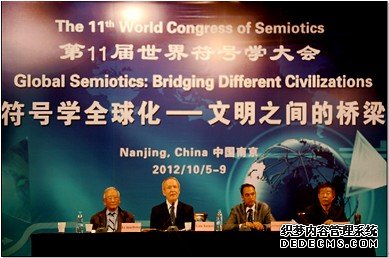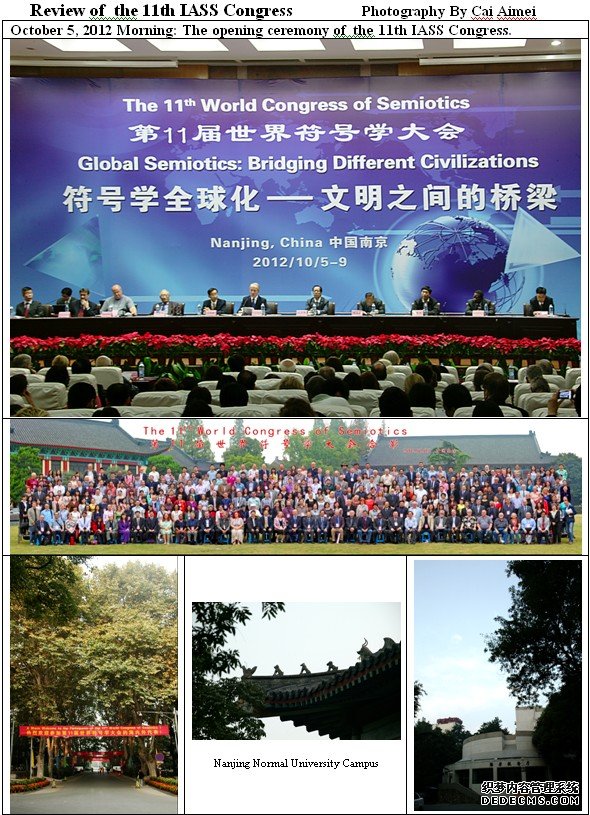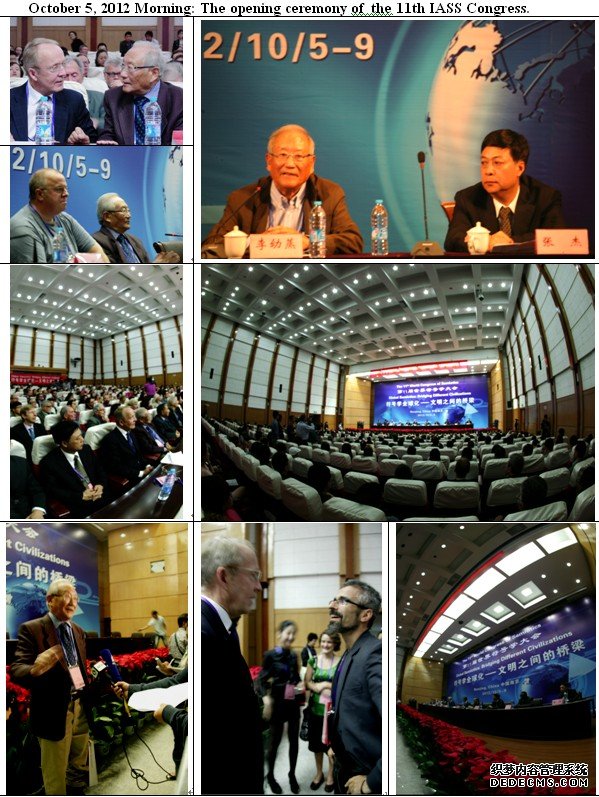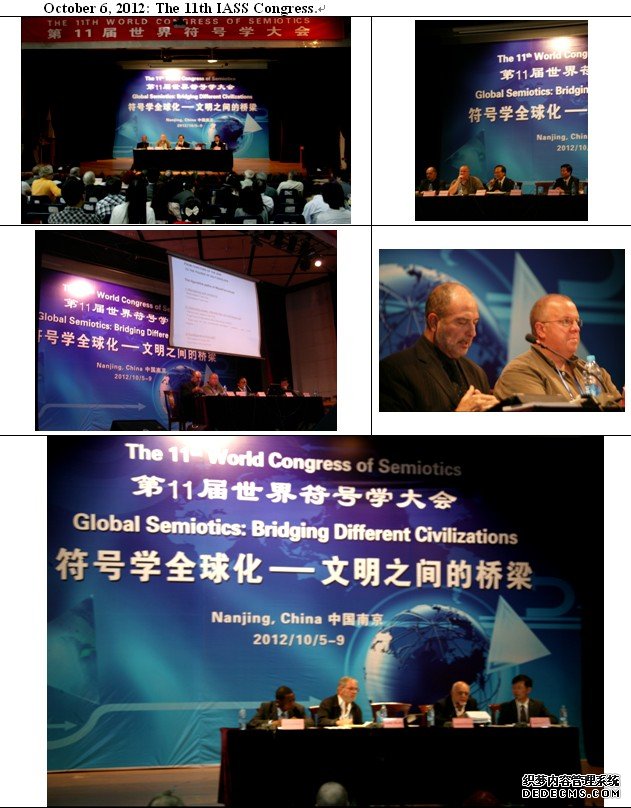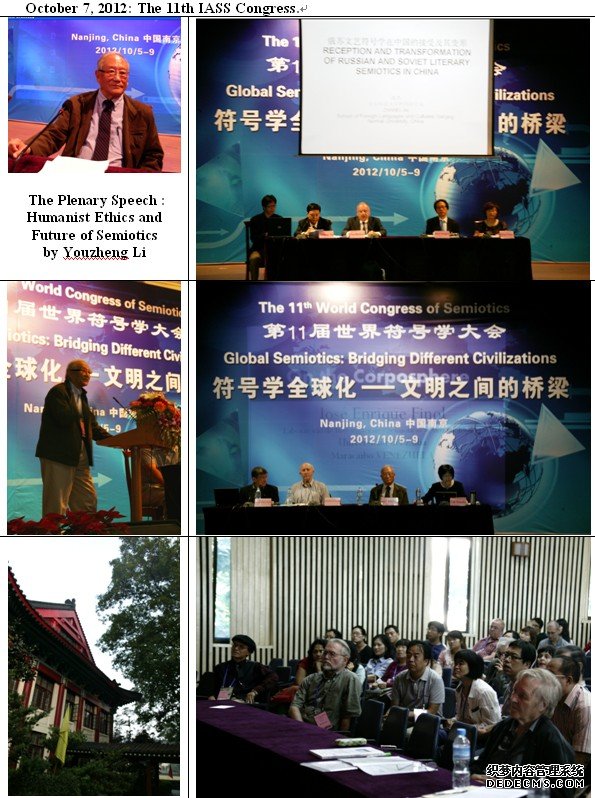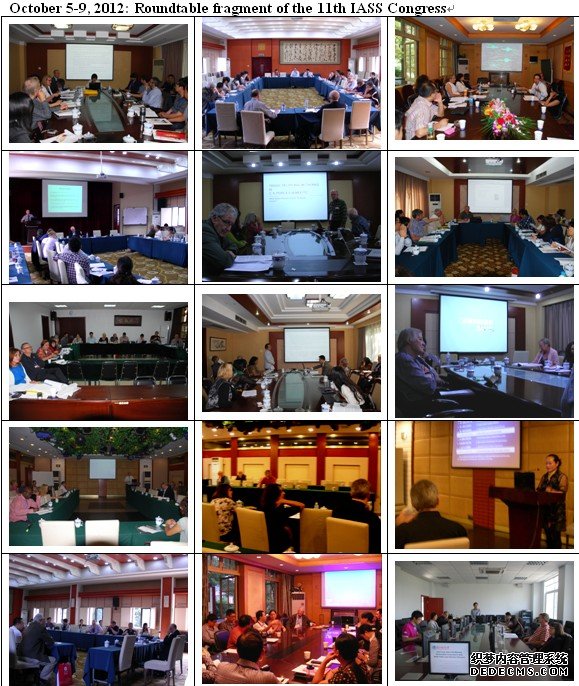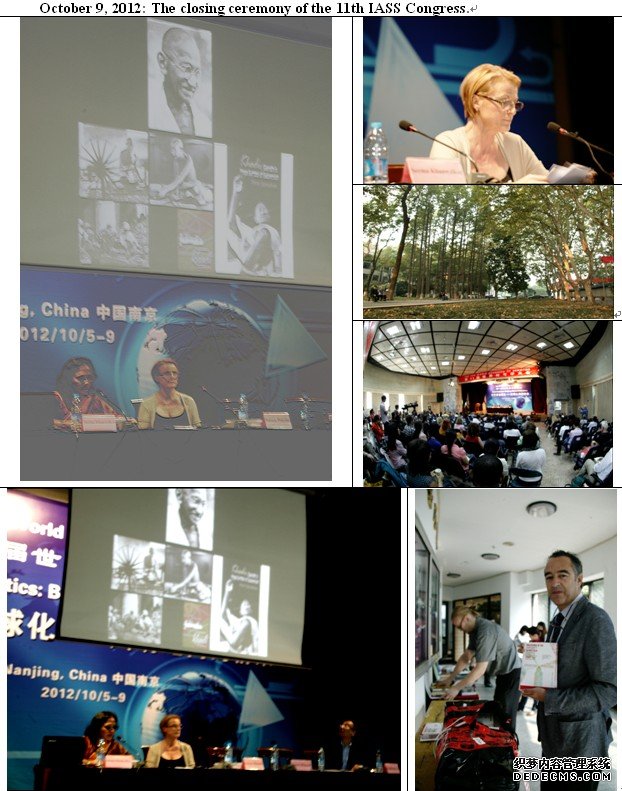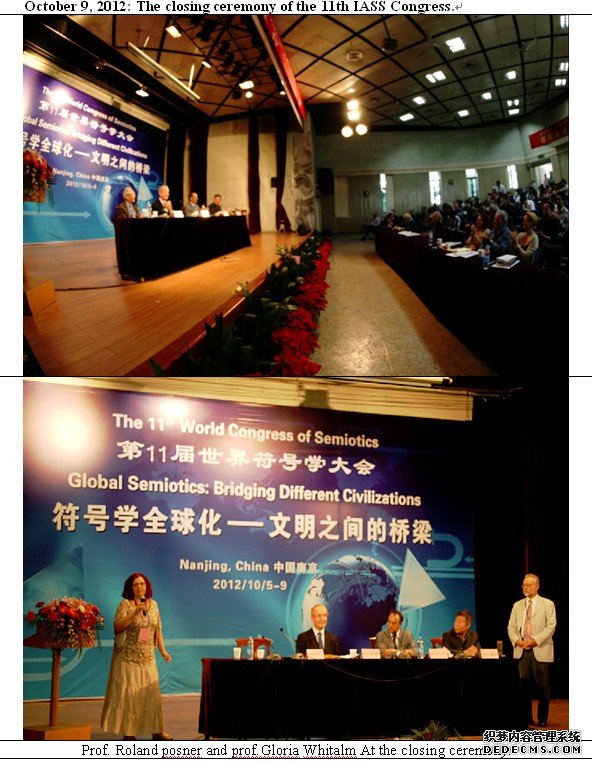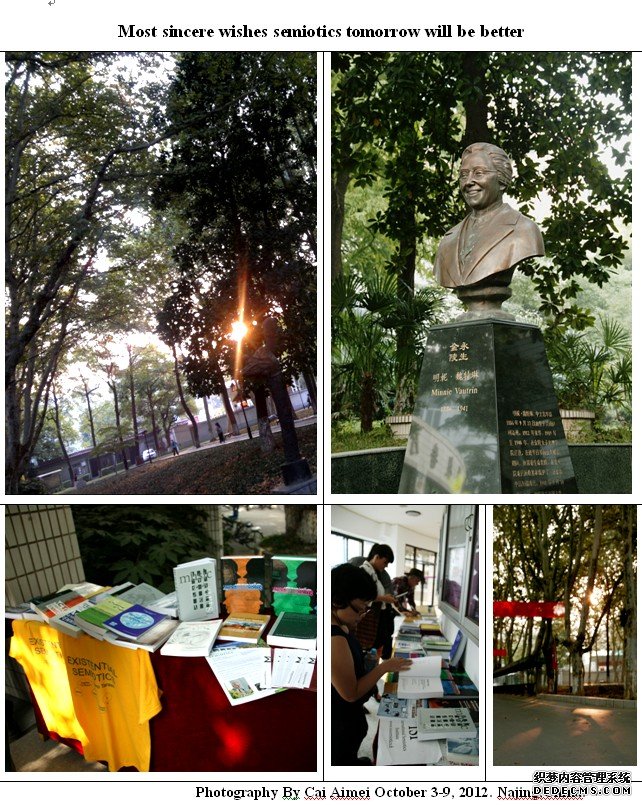The Speech at the Concluding Session of the 11th IASS Congress (October 9, 2012 Morning) Youzheng Li
The Concluding Session of the 11th IASS Congress. From left to right: YouZheng Li, Eero Tarasti, Jose maria Paz Gago, Xingbin. Photography By Cai Aimei
Technically Speaking, Chinese semiotics remains to be much weaker than those in many other countries. But, honestly and realistically, China Semiotics will become one of the strongest and richest semiotics countries in near future. In many other countries semiotics remains to be a single discipline, while idealistically speaking, semiotics will spread to and penetrate into almost all fields of social and human sciences in China, including both modern and traditional types as well as oriental and western civilizations alike. China, beside her great success in material reconstruction for the past 35 years, will also join the top intellectual forum at the global level.
The semiotic world consists of two kinds of intellectual force at the two operative levels: a variety of disciplinary tactics and the interdisciplinary strategy. This academic mixture is on one hand a natural phenomenon requested by semiotic practice but on the other hand also becomes one of the roots of the scientific controversy within semiotic activities. This semiotic tendency is further strengthened recently because of the currently ever-increasing professional competition and institutionalization. The new social-academic situation presses us to reconsider the essence of the semiotic. Why there should be semiotics? If semiotics, after narrowing its thematic scope, is made just another discipline among many, it is a mere issue of naming. For example, if you call cognition science the semiotics proper today, that is just like what we have done with respect to the disciplines of logic and linguistics; we are faced with a categorical confusion. Yes, all these scientific disciplines are important and co-constitutive parts of semiotic world; that means their specialized knowledge are even useful for many semiotic projects in other disciplines at the above-mentioned tactic level. Nevertheless those disciplines themselves are also autonomous academic units that can exist independently in the regular academic world without an obvious necessity to join further interdisciplinary activities. If these internally well-organized disciplines claim to be the central part of semiotics, that would hint a tendency for some disciplinary-central domination, namely, they attempt to use their single disciplinary science to unify so many other ones. What I point out here has nothing to do with decreasing the significance of any semiotic-related scientific disciplines as such in our semiotic world, but we have to pay attention to a more reasonable readjustment of functional roles in our semiotic world. It is obvious that the strategic part of the above operative dichotomy is more related to those characteristic interdisciplinary-directed intellectual objects, particularly the traditional humanities. And when considering both western and non-western traditional humanities, the categorical confusion must become doubly serious. Because of being less scientific in their constitution, they will become the main objective in our semiotic world. After all the aim of semiotic operation is just to clarify the semantic and constitutional ambiguity.
Therefore the very center of the current semiotic practice rests on that kind of academic activities that are more related to the interdisciplinary exploration. The latter is especially requested by modernization of the traditional humanities, namely philosophy, history, literature, arts and religions. Differently from the above mentioned modernized scientific disciplines (which can definitely develop themselves along the respectively fixed scientific channels), the humanities still keep their traditional semantic and constitutional complicities which makes them unable reasonably to provide the truly effective intellectual means to solve our very basic problems of mankind. Accordingly, despite the solidly successful development of science, technology and commercialization for the past centuries, the central problems of value and faith related to the desirable existence of human being have remained to be mostly unsolved. We need a more reasonably constituted epistemology with the related more scientific methodology to improve or modernizing human knowledge of the traditional humanities.
After several hundreds of years of scientific development of disciplinary specialization we humanities scholars find that a new era emerges when the humanistic knowledge strongly requests a reorientation of it development: namely to strengthen strengthening the horizontal or interdisciplinary interaction. If this statement is true, the significant task is just to rest on semiotics.
“Semiotics” is just a term that can be used for any chosen content. If we choose it to superfluously name an mere regularly existing scientific discipline, we could make it more separate from the above-mentioned genuine semiotic spirit; but if we use it to name that more synthetic scholarly collective it would be linked to a much more great intellectual goal: to modernize the humanities at the global level.
Semiotics as the central force to help innovating the knowledge of human science remains in its beginning period; it is not too old, instead it is still quite young. Let’s international humanistic scholars work together to reorganize our problematic from both disciplinary and interdisciplinary angles in order to more effectively pursue our semiotic idealism.
By the way, this successfully held IASS Congress of Nanjing implies an additional historic sense that: it is held in one of the oldest civilization areas which had just said a good-bye to her lasting feudalist history through just passing over one hundred years of self-modernization period. It terribly needs the new epistemology and methodology in her intellectual reconstruction. It is our semiotics that offers such a possibility.
Finally, as one of the original designers for this great congress, let me sincerely express our thanks to:
This congress initiated six years ago cannot be realized without their almost uniquely creative efforts in our present-day ever-more complicated world.
Let’ me also express my sincerely thanks to many other international scholars who have been engaged in promoting eastern-western semiotic cooperation, especially Prof. Roland posner and prof.Gloria Whitalm, our two honorary IASS presidents.(Prof. Xin Bin, May I recommend the two honorary IASS presidents to give a short speech respectively to indicate the historical continuity of the bilateral cooperation between IASS and China semiotics?)
By the end, let’s thank the excellent team of NNU Committee headed by Professors Zhang Jie, Xin Bin and Yan Zhijun, especially Gu Xiaomei, Ji Haihong, Wang Yongxiang for their whole-heartedly devotion for organizing this historic international meeting. Many thanks for all participants coming to Nanjing from every corners of the world. (October 9, 2012. Morning)
(Edit:admin) |
MY EMAIL : liyouzheng@gmail.com

